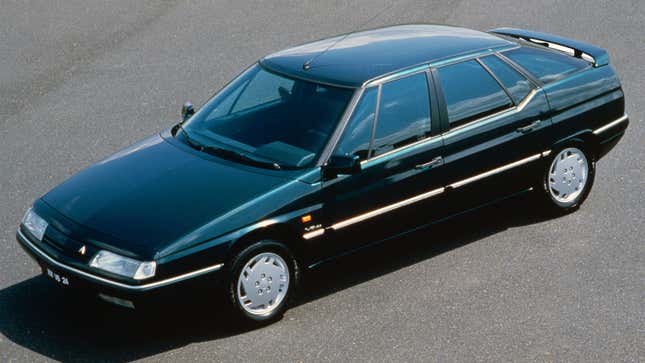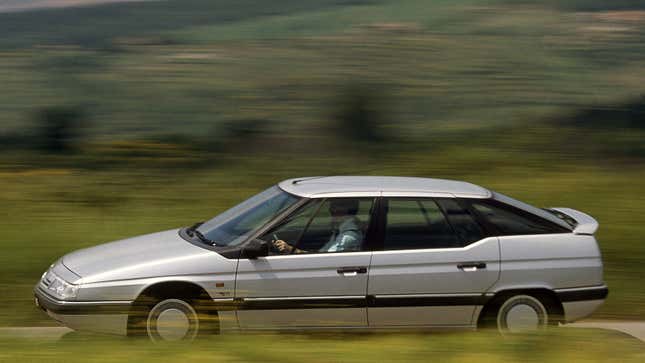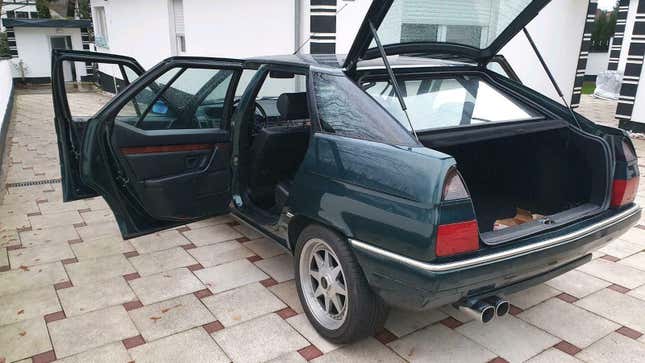
One form of baguette measuring contests between enthusiasts of French cars is the question of the last “true” Citroën. There are a fair few answers to that question, not only because Citroën cars continue to be built even today. For some, the last real Citroën was the CX, built until the early ‘90s in estate form, as the CX was conceived before the 1974 Peugeot merger which gave birth to the PSA Group. Some say it’s the C6, as the 2000s flagship still had hallmark Citroën oddities and unmistakable flair, as well as hydropneumatic suspension. And among some, the sharply styled, spaceship-like XM is the real answer.
The XM differs from the CX in various ways, even if it was designed to be a bold successor to a bold car. For one, the XM could accommodate other engines than straight-fours as it wasn’t based on an ill-fated rotary engine strategy that was scrapped at the last minute. The CX was, and as a result its hoodline was too low for a V6. And unlike the CX, the XM featured a large glass hatch instead of a small trunklid. Despite its fastback shape, the non-wagon CX was a four-door car, and as a result it really needed the wagon variant for buyers looking for more cargo capabilities.

One of the XM’s recognizable features is the “band of light” glasshouse that features no thick pillars but 12 panes of glass around the car instead, really giving the Bertone-designed car a futuristic, architectural look. Some well-equipped cars were shipped with a 13th window, and that one stands for a interesting engineering decision. No, we’re not talking about an optional sunroof, but a window hidden in plain sight.
The XM belonged to a segment where buyers traditionally favored not only a German manufacturer, but a four-door sedan. The Ford Scorpio could be considered one of its competitors, but even that was available with a formal sedan roofline as well as the 5-door model; same with the Saab 9000. One of the things a regular upscale sedan offered over a large 5-door hatch was a cabin completely protected from the elements, such as wind, when the trunk was accessed. Lift the hatch in windy weather and the hairdos of people sitting in the back might suffer from the intrusion of a cold breeze. They might as well have been travelling in a Yugo, then.


Citroën’s solution to this very specific problem came in the shape of the 13th window. It was a rear window beneath the rear window, one that remained in place when the hatch was opened, giving the occupants the benefits of a sedan without having to compromise on capability. You could still lift the partition glass away if necessary, too.
It goes without saying that the trick window didn’t win over hordes of Mercedes and BMW buyers. Early XMs also came with electrical problems that were later traced to bad quality electrical connectors, but as the dices were weighted in favor of more conventionally designed cars to begin with, any build quality maladies would doom the XM to mediocre sales and relative obscurity.
Still, the XM was nominated the European Car of the Year in 1990, and 333,700 units were sold before production ended in 2000. Today, the early-1990s models are legal to import to the United States, as well as the earliest mid-90s facelift cars with some of the XM’s shortcomings addressed.